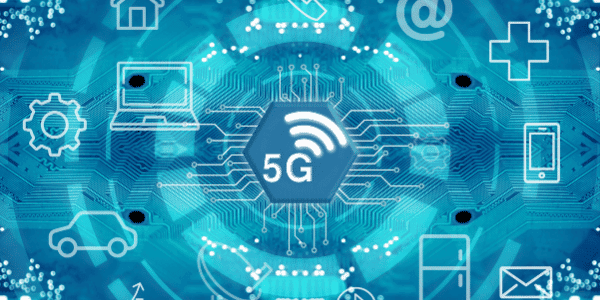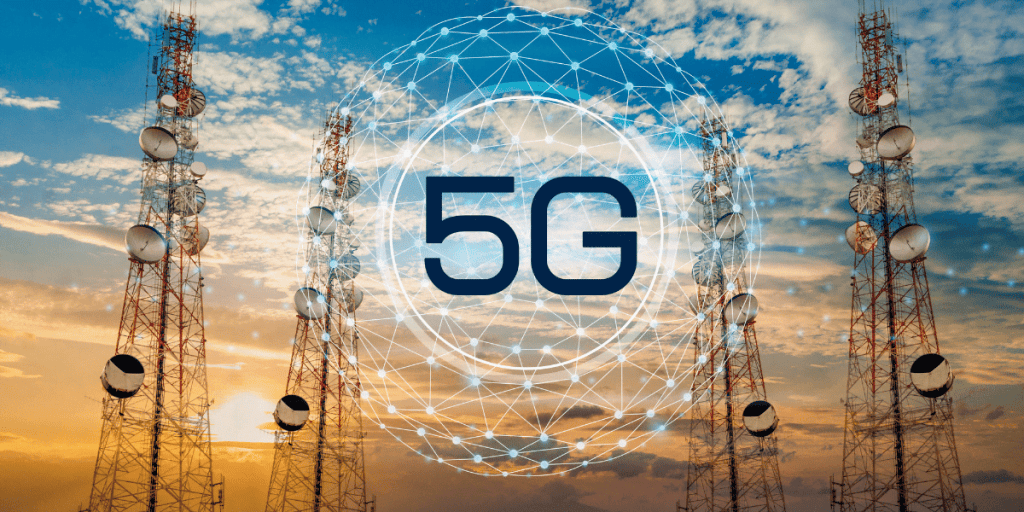5G Coverage Information…
Table of Contents
ToggleFrom a service distribution standpoint, the 5G network story began in 2017, when the 3rd Generation Partnership Project (3GPP, a body responsible for setting the rules that govern wireless connectivity) issued the non-stand-alone standard for 5G. This framework allows 5G to coexist alongside 4G. In June 2018, the 3GPP issued its standard for stand-alone 5G. Since then, infrastructure developers like Ericsson and Nokia have been working with the four major wireless carriers in the US to construct 5G networks and test them with devices bearing 5G radios that comply with the new standard.
Today, 5G network coverage has advanced to the stage where all the major US carriers now have some form of consumer 5G service up and running. At the same time, smartphone makers are developing and announcing new devices developed in line with evolving 5G technologies.
The Challenges to Achieving Coverage
5G, or the fifth generation of wireless communication standards, promises to improve on the performance of previous generations, with significantly higher data transfer speeds and minimal latency (the lag between the transmission of a signal from a device and it’s arriving in a usable form at a receiver). As a result of this, advocates of 5G say that it promises near-instantaneous downloads, real or near real-time communication between connected devices, and new use cases for business, infrastructure, and consumer applications.
But 5G is still in its very early stages of deployment and development, and all of these ideals aren’t achievable yet. And there are technical, budgetary, and practical hurdles to overcome before 5G can truly deliver on all of its promises.
Low, mid-band, and high-band spectrum radio waves make up the foundation of the 5G standard, so 5G networks operate on a number of different frequencies. Bands at 6GHz (gigahertz) and below make up the low end, while millimeter-wave or mmWave frequencies in the 20 to 60GHz range occupy the high end of the spectrum.
Existing networks for LTE or Long-Term Evolution services have been using the sub-6GHz spectrum, but operators will need to build more of this infrastructure to accommodate the rollout of 5G.
While the millimeter-wave spectrum has been unused, the extremely high frequency of mmWave makes it unable to travel over long distances. In addition, solid matter such as buildings, dense trees, and even glass can block its passage, making the use of mmWave 5G difficult to achieve indoors. As a result, devices operating on a mmWave-based 5G network will have to be very close to a signal node in order to get reception.
Though it may be practical to set up 5G nodes at frequent intervals in a densely populated urban area, this option won’t work in remote and rural locations. So, both sub-6GHz and mmWave infrastructures are necessary to ensure the high speed and wide geographic spread of 5G.
How 5G Coverage Will Occur
A Radio Access Network and a Core Network are the two main components of any mobile service, including 5G. Various kinds of infrastructure elements make up the Radio Access Network, including small cells, towers, masts, and dedicated systems in buildings and homes that connect mobile users and wireless devices to the main core network.
Particularly at the new millimeter wave (mmWave) frequencies, where the connection range is very short, small cells will be a key feature of 5G networks. These will have to be distributed in clusters to enable users to get a local connection, with the small cells stepping down from the larger network, which provides wide-area coverage.
At an individual household or building level, subscribers will have the option of installing a signal booster or cellular amplifier – a combination of exterior antenna and internal booster that can capture a 5G signal and transmit it into the structure, overcoming the blocking effect of walls and trees.
The 5G wide area network “Macro Cells” will use MIMO (multiple input, multiple output) antennas, which have multiple elements or connections to send and receive more data simultaneously.

The 5G Core Network consists of the mobile exchange and data network that manages all mobile voice, data, and internet connections. Operators have had to redesign this Core Network from the blueprint for previous generations to achieve better integration with the internet and cloud-based services, and also to include distributed servers across the network that will improve response times and reduce latency.
Current 5G Coverage Strategies
Before its merger with T-Mobile, Sprint had been using its existing mid-band spectrum (2.5GHz) to build out its 5G network, giving wider signal coverage, but less speed than mmWave. As of July 1, 2020, T-Mobile deactivated Sprint’s 2.5GHz network in order to integrate it into its own 5G coverage.
Though it started with mmWave in a handful of cities, T-Mobile has since been using a low-band spectrum to roll out a nationwide 5G network that now extends to nearly 6,000 cities and to some rural areas. The company claims to cover 225 million people across the US.
The AT&T 5G Plus service relies on mmWave to deliver a higher speed network to 35 cities. The carrier also has a low-band network that currently extends to 395 markets, serving 205 million people.
Verizon has been relying exclusively on mmWave in its initial 5G launch, with speeds of 506.1 Mbps (Megabits per second) achievable on its network. However, the company’s reach is nowhere near as wide as that of its competitors who are using the low- to mid-band spectrum. It’s been reported that Verizon users are only able to get a 5G connection less than 1% of the time.
Where Is There Coverage?
5G Coverage Areas:
Verizon’s 5G Ultra-Wideband is now live in parts of select cities across the US, including Atlanta, Boise, Boston, Charlotte, Chicago, Cincinnati, Cleveland, Columbus, Dallas, Denver, Des Moines, Detroit, Grand Rapids, Greensboro, Hampton Roads, Hoboken, Houston, Indianapolis, Kansas City, Little Rock, Los Angeles, Memphis, Miami, Minneapolis, New York City, Omaha, Panama City, Phoenix, Providence, Salt Lake City, San Diego, Sioux Falls, Spokane, St. Paul, and Washington D.C.
AT&T 5G+ is now available in select areas and venues in the following cities:
- AZ: Phoenix
- CA: Los Angeles, Menlo Park, Oakland, Redwood City, San Bruno, San Diego, San Francisco, San Jose, West Hollywood
- FL: Jacksonville, Miami, Miami Gardens, Orlando
- GA: Atlanta
- IN: Indianapolis
- KY: Louisville
- LA: New Orleans
- MD: Baltimore, Ocean City
- MI: Detroit
- NC: Charlotte, Raleigh
- NV: Las Vegas
- NY: New York City
- OH: Cleveland
- OK: Oklahoma City
- PA: King of Prussia, Philadelphia
- TN: Nashville
- TX: Austin, Dallas, Houston, San Antonio, Waco
Internationally, South Korea, China, and the United States are the countries currently leading the world in building and deploying 5G technology.
Summary:
5G Coverage
From a service distribution standpoint, the 5G network story began in 2017. 5G, or the fifth generation of wireless communication standards, promises to improve on the performance of previous generations, with significantly higher data transfer speeds and minimal latency (the lag between the transmission of a signal from a device and it’s arriving in a usable form at a receiver). As a result of this, advocates of 5G say that it promises near-instantaneous downloads, real or near real-time communication between connected devices, and new use cases for business, infrastructure, and consumer applications. 5G Coverage Areas: Verizon’s 5G Ultra-Wideband is now live in parts of select cities across the US, including Atlanta, Boise, Boston, Charlotte, Chicago, Cincinnati, Cleveland, Columbus, Dallas, Denver, Des Moines, Detroit, Grand Rapids, Greensboro, Hampton Roads, Hoboken, Houston, Indianapolis, Kansas City, Little Rock, Los Angeles, Memphis, Miami, Minneapolis, New York City, Omaha, Panama City, Phoenix, Providence, Salt Lake City, San Diego, Sioux Falls, Spokane, St. Paul, and Washington D.C.





